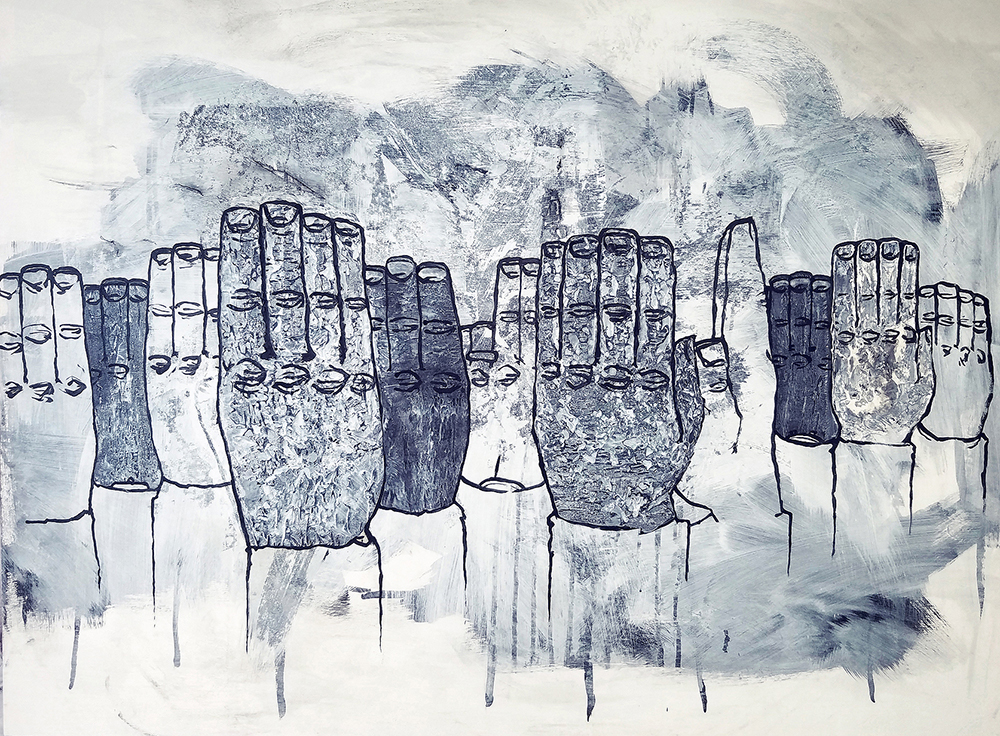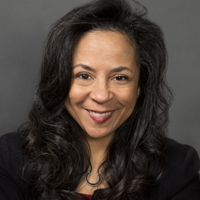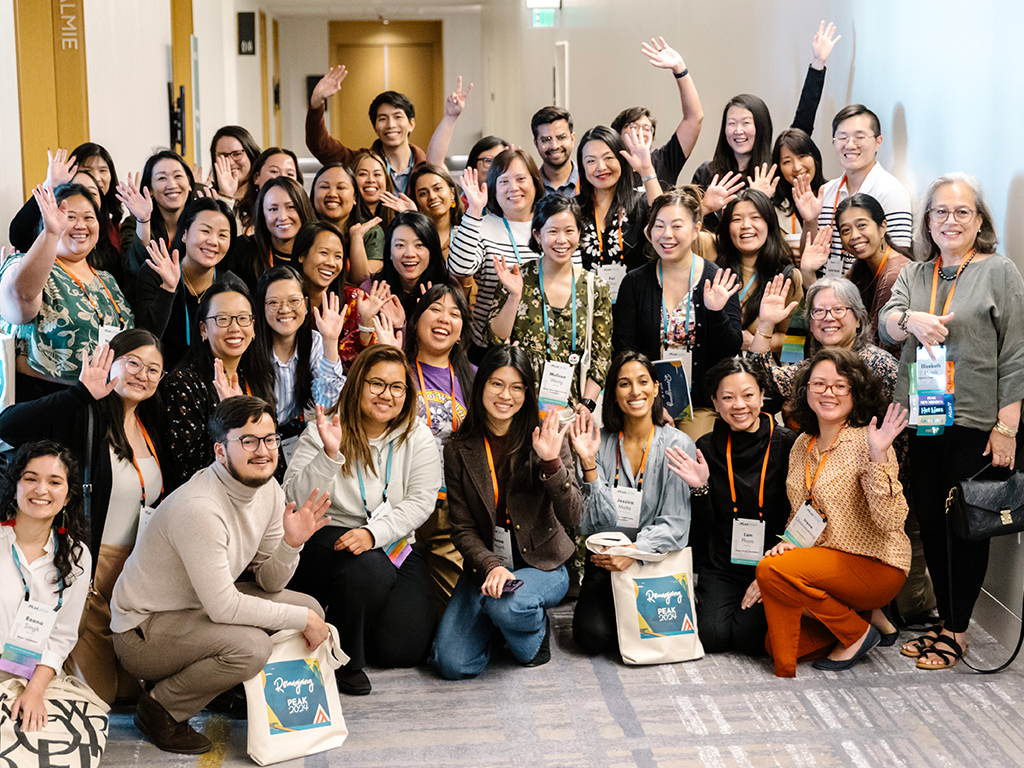
Increasingly, funders are professing commitments to equity and a desire to be more relevant and reflective of a changing world. For many, a commitment to these issues is implicit in the goals and nature of their programs and grantmaking. But assessments of the degree to which funders are in fact addressing disparities, reducing inequitable access to resources, or generally advancing equity don’t always have the data to back them up. For example, according to PEAK’s 2020 flash survey of 165 grantmakers, 43 percent of respondents said they were providing extra operating support to existing grantees in response to COVID-19, but only 9 percent said they were using demographic data to guide those efforts, even though it was known in the spring of 2020 that COVID-19 was disproportionately impacting Black and Latinx communities.
Without data, strategies to advance equity are uninformed and therefore unlikely to be effective. Consequently, funders need to be clear upfront on how they will integrate demographic data into their processes to provide important insights on how their grant dollars are deployed and how to change and refine their strategies and approaches.
Focus on how data will be used
Some funders are beginning to understand what social scientists, political scientists, business leaders, government officials and many others have always known: demographics matter. How problems are framed, how interventions are structured, and how strategies for outreach and engagement are developed are all deeply connected to the backgrounds and lived experiences of both those who design programs and those who receive funding. In addition, understanding the dynamic nature of the contexts in which foundation efforts are unfolding is crucial to assessing whether any effort is impactful and effective. Demographic information is one essential element to understanding how to assess any strategy seeking philanthropic support.
The goal of using demographic data to advance diversity, inclusion, and representation is critical to a funder’s understanding of whether the programs they support align with their own organizational values. For example, many funders collect data to assess the diversity of the leadership of the groups in their grantmaking portfolio or to understand how many groups are led by people of color. These goals focus on assessing grantmaking decisions that have already been made with respect to the equitable distribution of foundation resources.
But this frame limits the full power of collecting and using demographic data. Funders need to go beyond asking organizations to check boxes about leaders and staff and help these organizations really understand their stakeholders and constituents, as well as their leadership and organizational cultures. The rapidly changing demographics of communities across the country, the dynamic nature of identity, and the expanding degree to which people want to be seen for who they are demands that this data be engaged in more nuanced and disaggregated in more ways than just sharing a dashboard or slide deck. To do this, funders must build their own internal capacity to understand the salience of demographics for their various program areas. Without this, work can be based on biases, outdated assumptions, or limited to overt commitments to a set of values with little connection to improving strategy.
By starting with how you will use data to strengthen programs, reach underserved or underrepresented communities, or ensure that resources are deployed effectively in an increasingly diverse world, foundation staff must design tools and processes that don’t just document diversity, but which build the capacity for this diversify to inform strategies and draw upon its strength. Grants management professionals can help design these tools and systems to capture inclusion in ways that balance the tension between complexity and manageability by helping to keep the focus on what level of demographic detail funders actually need to inform feasible changes and strategy.
A group of Black-led nonprofits in the Bay Area received significant general support and capacity-building resources from a local donor to strengthen their programs serving youth in a neighborhood perceived to be overwhelmingly Black. The capacity-building support allowed them to gather census- and zip-code-level data on the youth population in the neighborhood, which revealed that 40 percent of the youth in the community were Latinx and/or Asian American and Pacific Islander—leading to shifts in strategy and staffing that improved outreach to all neighborhood youth.
Here are three key questions to ask to help your organization determine and articulate how demographic data will be used:
- How will we use the demographic data we collect to strengthen and inform strategy?
- Are we prepared to make changes to our programs and/or approach based on what the data may reflect?
- Do we have the capacity to effectively engage nonprofits about how we will use this data to strengthen our impact and how they can use this data to strengthen theirs?
Center nonprofit needs and capacity
Nonprofits grapple with the tension between collecting the data they need to inform strategy and the data they need to report to funders. Too often these are not the same thing. Most nonprofits are deeply engaged with understanding the complexity of their stakeholders, from board members to affected populations. Most nonprofits, especially small ones, are deeply rooted in communities and realize that knowing the full complexity of their constituents is essential to effectively engaging them. But many struggle with building the core capacity to collect and use this data in part because they are burdened with numerous and disparate requests to report on it.
Funders new to demographic data collection are understandably concerned with organizations struggling with this tension. This is why it is so critical for funders to be crystal clear on the information they need from nonprofits to strengthen their funding strategies and on what they are actually likely to change as a result of having it. It is also critical for funders to actively partner with nonprofits to understand their data-collection needs and capacities and to assess how to best support them in collecting and using data to strengthen impact.
Here, grants management professionals can help surface an understanding of what nonprofits face and distill what is feasible and relevant with respect to data management and data systems. Grants management professionals can bring their specialized knowledge to bear on assessing nonprofits’ priorities and capacity not only to meet reporting requests, but more importantly to align the data that funders request with the data and systems that will allow nonprofits to increase their insight and effectiveness.
A regional community foundation learned that a significant level of statewide funding was available to provide COVID-19 relief to underserved and disproportionately impacted constituents. But none of this funding was coming into their community despite the large presence of heavily impacted residents. Further research revealed that many nonprofits serving these communities lacked the capacity to collect the data required to qualify for funds. The foundation launched an effort to collect, compile, and share this data which stimulated the infusion of much needed resources to address the disparate impact of the pandemic.
Here are three key questions to ask to help your organization best support grant partners in the data collection and reporting processes:
- Do we understand the current capacity of the groups we fund to collect and use this data on their stakeholders (both internal staff and constituents)?
- Do we understand how organizations may be using and/or reporting this kind of data to other supporters or funders?
- Are our requests for this data aligned with the broader field? If not, how do our unique requests add specific value to our strategy and approach in ways that demonstrably strengthen impact?
Leverage your expertise
On the frontlines of program data, grants management professionals can spot trends, assess nonprofit capacity, and build systems that help funders collect and embrace demographic data so that it provides insight. Grants management professionals can be attentive to and proactive in building efforts that strengthen nonprofits rather than burden them. They can also build expertise in trending demographic data collection methods—and how those methods contribute insights that are crucial to assessing the foundation’s impact.
A large national foundation launched an effort to strengthen its ability to understand the racial and gender makeup of the individuals who staffed and led the groups it supported. The foundation engaged a field expert to train and prepare its grants management team to support program staff’s ability to understand and ground demographic data in the foundation’s strategic approach and to connect this data to its emergent commitment to diversity and equity more explicitly.
Grants management professionals have access to a robust peer community that they can draw upon to stay abreast of current trends and good practices. They are also well suited to provide insight on how to integrate practical approaches to collect data and strengthen aligned systems. You can elevate the value of your expertise as a grants management professional by asking these three key questions:
- Do our data collection systems allow for nonprofits to provide and/or repurpose data they may already have?
- Can our systems produce reports or information that strengthens the field and supports the work of the sectors in which we fund?
- How can we contribute to building field-wide capacity for the social sector to make the most effective use of this essential data?
GALLERY

Miha Sarani, Show…of Hands, Go on! (#BlackLivesMatter)
Elevating the experiences of those who have traditionally gone unheard has been a throughline in the art of Miha Sarani. “Learning about the history of portraiture, and particularly how it pertained to people of color, I wanted to do something that would help show the strength of an individual and help communicate the achievement of an individual.” Sarani is an educator at the Kirkland Arts Center, a nonprofit, where he ensures that inclusion and questioning tradition is at the heart of his instruction. “I believe it is a privilege and a responsibility to build community beyond [the classroom], allowing class experiences to have deeper inquiry with others throughout society.”
Miha Sarani (mihasarani.com)



